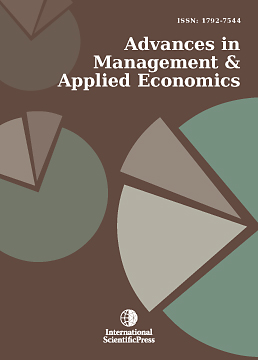Advances in Management and Applied Economics
Spatial-temporal Dynamics and Driving Forces of Provincial CO2 Emission Responsibilities in China from Multiple Perspectives
-
 [ Download ]
[ Download ]
- Times downloaded: 709
Abstract
A comprehensive analysis of the carbon emission profile of Chinese provinces from multiple perspectives is required to develop equitable and effective policies to reduce carbon emissions. This study estimates the carbon dioxide (CO2) emission responsibilities of China’s 30 provinces and 22 sectors from production, consumption, and income-based perspectives from 2012 to 2017. Structural decomposition analysis (SDA) is used to determine the driving forces of changes in CO2 emissions in China from 2012 to 2017. The results indicate the following. (1) The dominant CO2 emission sectors are the Electric Power, Steam, and Hot Water industry and the Smelting and Pressing of Metals industry. (2) The scale effect of the initial input is the dominant factor affecting the growth of CO2 emissions, followed by the scale effect of the final demand from 2012 to 2017. (3) The structural effect of the production output is the primary carbon reduction factor, followed by the structural effect of the intermediate product input and the carbon intensity effect. Based on these results, recommendations are provided to reduce CO2 emissions, such as developing green and low-carbon technologies, revising and optimizing the energy composition, accelerating the green transition, and a science-based approach to investment.
Keywords: Multiple perspectives, China’s Provinces, Spatial-temporal evolution, MRIO model, SDA model.
